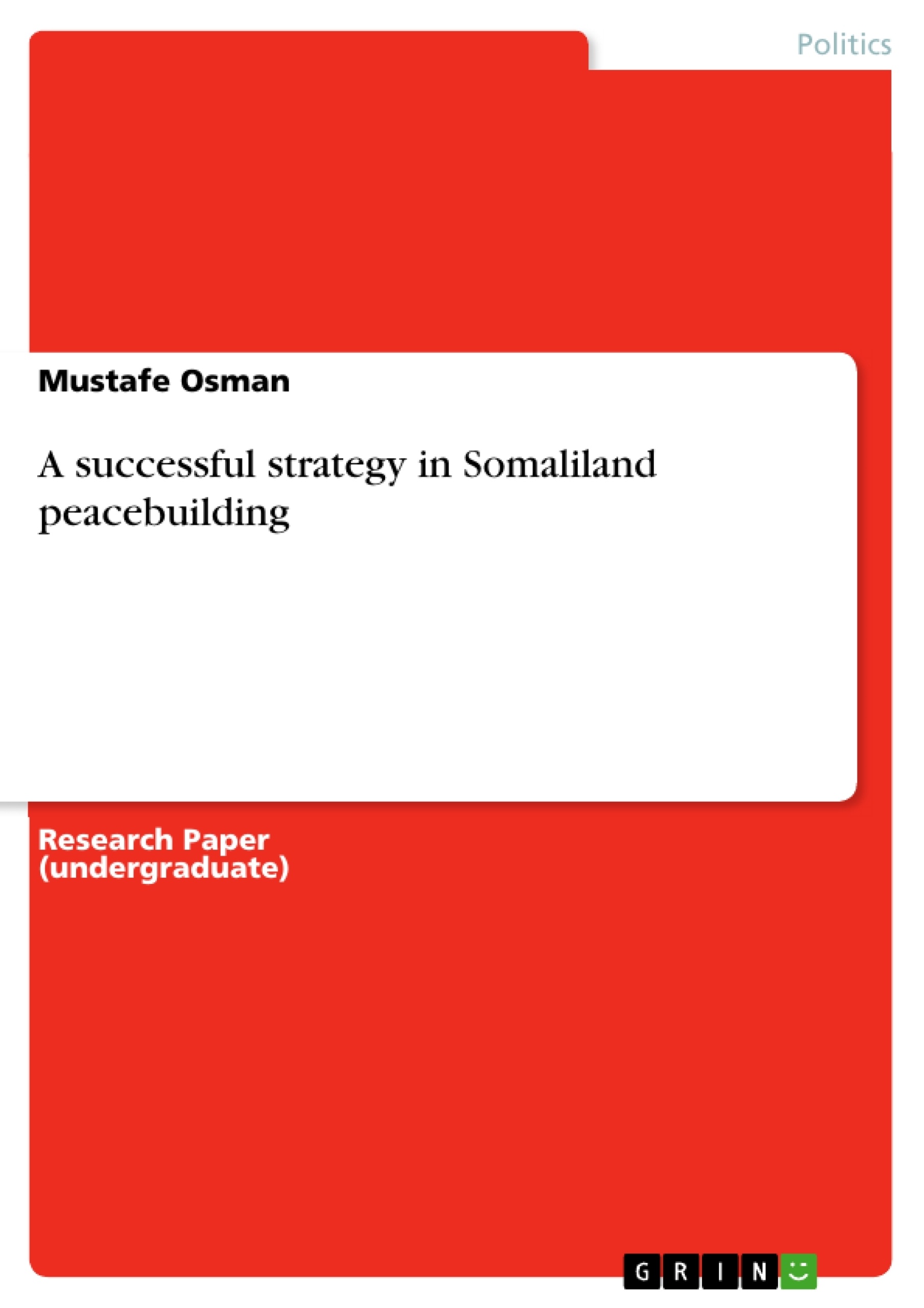Somaliland is a leading state that is championing adoption and practicing democracy in the Greater Horn. Free and fair elections, privatization, constitutionally changed governments and the free press are unique to Somaliland. All these are not something injected into Somaliland or imported from outside and there were no external supports that helped Somaliland to come here. This paper examines how this triumph was achieved – a background to Somaliland peacebuilding – stakeholders’ contribution to peacebuilding – and factors sustained stability and peace in Somaliland. It finds that a bottom-up-approach is successful strategy in peacebuilding and institution process.
Inhaltsverzeichnis (Table of Contents)
- Abstract
- Introduction
- Background to Somaliland Peacebuilding
- Stakeholders' contribution to Peacebuilding
- Factors Sustained Stability and Peace in Somaliland
- Conclusion
Zielsetzung und Themenschwerpunkte (Objectives and Key Themes)
This paper examines the successful strategy of a bottom-up approach in Somaliland's peacebuilding efforts. The author analyzes the factors that contributed to stability and peace in the region, highlighting the unique circumstances and challenges faced by Somaliland after decades of conflict.
- The role of a bottom-up approach in peacebuilding
- The significance of stakeholder contributions to peace
- The factors sustaining peace and stability in Somaliland
- The impact of Somaliland's history and political context on its peacebuilding process
- The challenges and successes of Somaliland's path towards democracy and statehood
Zusammenfassung der Kapitel (Chapter Summaries)
The introduction provides a historical overview of Somaliland's journey, from its colonial past to its independence and subsequent conflict. The author explores the dynamics of peace and conflict, emphasizing the interconnectedness of peacebuilding, justice, and violence.
The "Background to Somaliland Peacebuilding" section examines the concept of peace itself, offering diverse definitions and highlighting its significance for individual and societal wellbeing. The author also explores the multifaceted nature of peacebuilding, emphasizing the importance of societal awareness and collaboration.
Schlüsselwörter (Keywords)
This paper focuses on the key terms of peacebuilding, bottom-up approach, Somaliland, stability, democracy, stakeholder engagement, and conflict transformation. It explores the unique context of Somaliland's peacebuilding efforts, emphasizing the significance of local ownership and community participation.
- Citation du texte
- Mustafe Osman (Auteur), 2014, A successful strategy in Somaliland peacebuilding, Munich, GRIN Verlag, https://www.grin.com/document/275629



